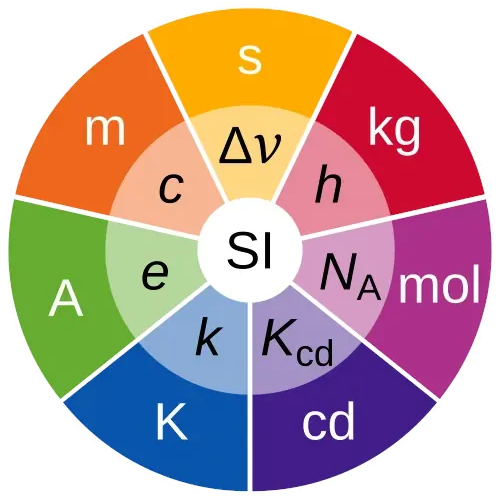Brexiteers’ irrational aversion to the Metric System
Puzzles me why Brexiteers still conflate use of International System of Units (SI) with the EU? Or why these people still think that the metric system is some how “not British” and kid themselves that they are being “patriotic” by refusing to use it? British Engineers and scientists have been pleading with various British governments to adopt the metric system for over 150 years – long before the EU was created.
For example, the British Association for the Advancement of Science (BAAS) advised Queen Victoria’s government to dump imperial measures in 1861 – two years before the 1863 Weights and Measures Act was passed. Britain signed up to the Metre Convention in 1883. The Ordnance Survey National Grid was metricated into kilometre squares during the National Triangulation, which began in 1936:-
SI Units named after British Scientists
Meantime a significant amount of work defining and improving the metric system was undertaken by British scientists and engineers. Many SI units are named after British innovators:-
- Farad (symbol: F) SI derived unit of electrical capacitance, the ability of a body to store an electrical charge. It is named after the English physicist Michael Faraday (1791-1867)
- Joule (symbol: J) SI derived unit of energy. It is equal to the energy transferred to (or work done on) an object when a force of one newton acts on that object in the direction of the force’s motion through a distance of one metre (1 newton-metre or N⋅m). It is also the energy dissipated as heat when an electric current of one amp passes through a resistance of one ohm for one second. It is named after the English physicist James Prescott Joule (1818–1889).
- Kelvin (symbol: K) SI base unit of temperature. It is named after the Belfast-born Glasgow University engineer and physicist William Thomson, 1st Baron Kelvin (1824–1907). The relationship between kelvin and Celsius scales is TK = t°C + 273.15. On the Kelvin scale, pure water freezes at 273.15 K, and it boils at 373.15 K under 1 atmosphere of pressure.
- Newton (symbol: N) SI derived unit of force. It is named after Sir Isaac Newton (1642-1727) in recognition of his work on classical mechanics, specifically Newton’s second law of motion. A newton is defined as the force which gives a mass of 1 kilogram an acceleration of 1 metre per second, per second, 1 kg⋅m/s².
- Watt (symbol: W) SI derived unit of power or radiant flux. It is defined as a derived unit of 1 kg⋅m²/s³, or equivalently 1 joule per second. It is used to quantify the rate of energy transfer. The watt is named after James Watt (1736-1819), whose worked extensively improving the efficiency of steam engines.
Almost all our competitors and trading partners use the metric system, including industrial giants China and Japan. Ditto former British colonies Australia, Canada, Hong Kong, New Zealand & South Africa. Fact is that most the planet is metric. And like it or not, UK is officially a metric country too – even if we still haven’t got round to altering the road signs yet. In fact, just three countries in the world do not use the metric system as the official system of measurement: the United States (despite signing up to the metre convention in 1875), Liberia, and Myanmar:-
As an aside
The internationally standard accepted way to cite fuel consumption is litres per 100km:-
It is also the unitary system that the UK vehicle Certification Agency uses in its calculations:-








